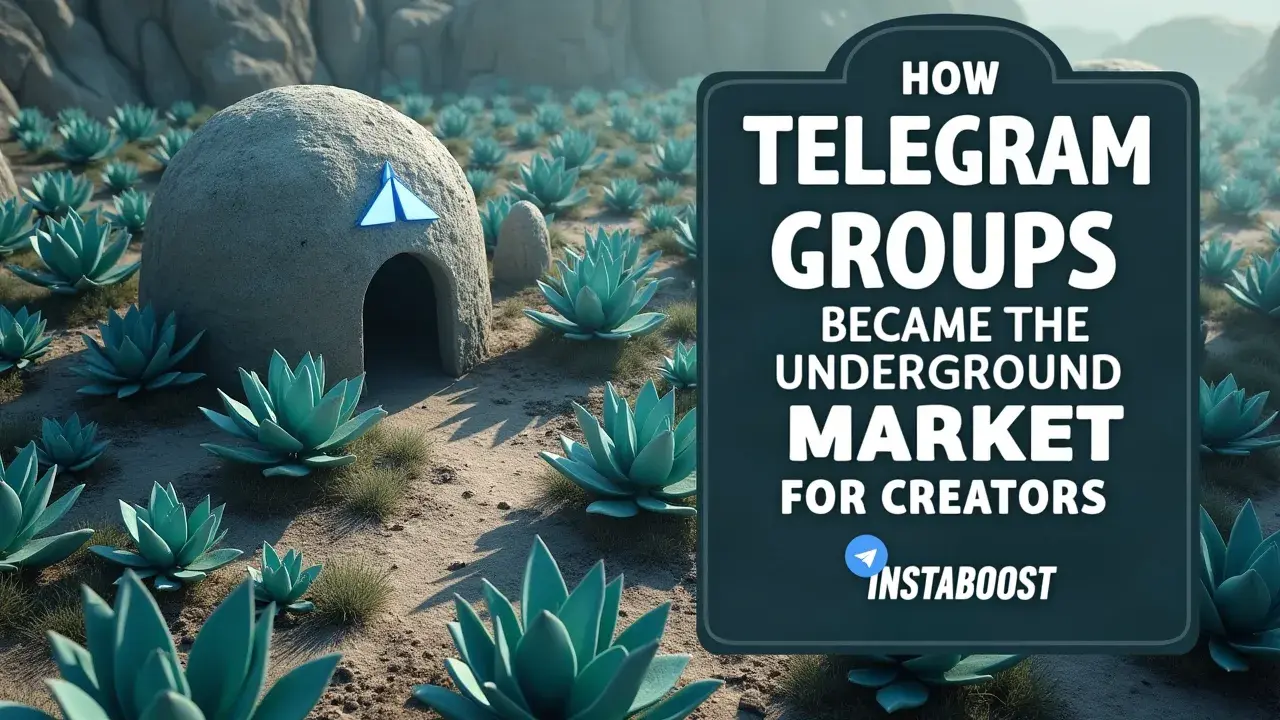How Did Telegram Groups Become an Underground Market for Creators?
Telegram groups function as flexible, semi-closed spaces where creators can share content, test offers, and monetize directly. Their evolution into underground markets stems from simple group setup, viral forwarding, and chat-based community features that bypass mainstream platform structures. Risks exist when moderation and payment norms are ignored, but clear rules and vetted access keep exchanges organized. Choosing niche-aligned groups and measuring engagement quality tends to yield the best outcomes.
Rethinking the Stage: Beyond the Spotlight of Mainstream Platforms
People always say that to make it as a creator, you have to reach as many people as possible – posting everywhere, chasing whatever the algorithm wants that day. But lately, I’ve been noticing something different. Telegram groups have become these quieter places where creators and their most loyal followers actually spend time together.
It’s not about chasing metrics like views or likes, or trying to make a splash on huge platforms. In these groups, people talk to each other, share work, and get real feedback. There are no ads popping up, and you don’t have to worry so much about what works for the algorithm this week.
It’s not about chasing metrics like views or likes, or trying to make a splash on huge platforms. In these groups, people talk to each other, share work, and get real feedback. There are no ads popping up, and you don’t have to worry so much about what works for the algorithm this week.
Instead, there’s this slow kind of trust that builds up over time. Some creators even sell their work or set up collaborations right there, without needing a middleman. It feels less like performing and more like being part of a small, steady community. When I compare that to the scramble for attention elsewhere – services like INSTABOOST or whatever the latest shortcut is – it’s a different pace entirely.
I even came across a guide on how to optimise your telegram strategy, and it struck me how much the advice focused on nurturing real conversation rather than gaming numbers. You start to wonder if maybe this way, working closely with a few people who really care, is actually more sustainable. Telegram’s not flashy, but there’s something about these smaller spaces that makes you want to stick around, and see what might happen next.
I even came across a guide on how to optimise your telegram strategy, and it struck me how much the advice focused on nurturing real conversation rather than gaming numbers. You start to wonder if maybe this way, working closely with a few people who really care, is actually more sustainable. Telegram’s not flashy, but there’s something about these smaller spaces that makes you want to stick around, and see what might happen next.

The Unmeasured Connection
Some data just doesn’t fit the usual mold, and that’s clearer when you spend time in those quiet Telegram groups. There’s a kind of comfort there – a sense that people aren’t interested in the same markers of popularity you see everywhere else. In these chats, no one is getting picked up by an algorithm or boosted by trending topics. Things move in smaller ways, through people who trust each other and stick around. It’s less about going viral and more about sharing a file, sending a link, or having a conversation that means something to a handful of people.
Even though there are services out there for things like secure Telegram member increase, in these corners, you don’t really see “audiences” – it’s more like a group of people who have decided to stay a bit out of view, even when everything else online is about being seen. If you tried to map out what’s happening, you’d find it doesn’t leave much of a trail. Most of what matters here isn’t in the numbers or the dashboards – it’s in the small exchanges that come and go, without leaving much behind for anyone else to find.
Even though there are services out there for things like secure Telegram member increase, in these corners, you don’t really see “audiences” – it’s more like a group of people who have decided to stay a bit out of view, even when everything else online is about being seen. If you tried to map out what’s happening, you’d find it doesn’t leave much of a trail. Most of what matters here isn’t in the numbers or the dashboards – it’s in the small exchanges that come and go, without leaving much behind for anyone else to find.
Strategy Is Quiet: Why Telegram’s “Underground Market” Isn’t for Amateurs
When a plan is simple enough to sketch out on a napkin, it’s usually worth paying attention to. The way Telegram groups are working right now isn’t only about creators finding a way around the bigger social platforms. It’s also bringing up some real questions about what we mean when we talk about an “audience.” These groups aren’t set up to reach huge numbers of people all at once. Instead, everything feels more deliberate. In these chat groups, it’s less about instant feedback or racking up views and more about building things up slowly – one message, one exchange, one small bit of trust at a time.
There’s no algorithm stepping in to boost anyone, and there are no quick ways to get attention, which seems to be the whole idea. Even though there are ways for people to get views on telegram, most creators in these spaces are focusing on knowing who’s there, what matters to them, and how they can be genuinely useful or interesting. It’s a shift from treating people like numbers to treating them like people who might want to stick around for a while.
You end up organizing things with them, not just for them, and that takes some patience. It moves at a slower pace, but it often feels more real. If someone wants to do well here, having a catchy list of goals or a tidy strategy isn’t going to cut it. The approach has to grow with the group and adjust as things change, which is a different kind of work than most people are used to.
You end up organizing things with them, not just for them, and that takes some patience. It moves at a slower pace, but it often feels more real. If someone wants to do well here, having a catchy list of goals or a tidy strategy isn’t going to cut it. The approach has to grow with the group and adjust as things change, which is a different kind of work than most people are used to.
Beyond the Metrics: Rethinking Value in Creator Communities
Most advice I hear about Telegram groups – stuff like “grow your audience” or “monetize exclusivity” – feels detached from what actually happens in these spaces. It’s as if everyone assumes there’s a single way to measure success, usually by counting followers or chasing some viral moment. Watching how real creators use Telegram, though, I see something quieter but more solid.
These groups don’t have algorithms pushing your stuff or trending topics to catch a wave on, but that doesn’t mean there’s no strategy involved. It’s just different: more private, more direct, less about putting on a show for the biggest crowd possible. Instead of worrying about follower counts, people here focus on building real trust. I’ve seen creators who might not have huge numbers, but their groups feel like a steady circle – people actually talk, ask questions, help each other out.
Sometimes there’s a passing mention of things like bulk telegram reactions, but it’s rarely the main event or what holds things together. There’s something steadying about that. It isn’t about hiding out, either – it’s a decision to step away from the performance of always trying to look popular, and to put your energy into connections that last and actually mean something. Thinking about Telegram groups in a strategic way requires dropping the idea that bigger always means better. Here, what matters is whether the conversations are real, whether people want to come back and stick around. That kind of value doesn’t show up in charts or leaderboards, but you notice it in the way people keep showing up, even when nobody’s counting.
The Perimeter of the Group
Truth doesn’t really show up with a big announcement – it’s more like it leaves small clues here and there. If you look at Telegram groups, for example, you see a lot of people changing their usernames, chats that scroll by quickly, and a sense that things aren’t meant to stick around for long. It’s nothing like posting out in the open where anyone can find you. It’s hard to say what you’ll actually get from joining one of these groups; sometimes it feels meaningful, other times it’s confusing. There are risks, too – legal trouble, someone taking your words out of context, or even just the stress of wondering who’s really in the group.
But those risks seem mixed up with the reason people are there in the first place: wanting privacy, or looking for a place that’s less watched, where people figure things out as they go along. The line between what’s a community and what’s a business isn’t obvious. It can change every time someone new arrives, or when people share payment links, or when a message disappears before anyone else sees it. These groups aren’t really built for getting noticed, but that doesn’t mean things stay hidden.
Screenshots get out, usernames pop up in other places, and what felt private starts to drift. Some folks think Telegram gives them this completely sealed-off world, but even the most careful setups have leaks – usually not because of a tech issue, but because people remember things. There’s always this quiet push and pull between wanting to be unseen and wanting to matter. The people who keep showing up in these spaces, the ones who seem the most real, probably know it isn’t a perfect system. Maybe they keep going because finding a place to belong is something you look for over and over, even when the group chat goes silent, and sometimes you catch yourself wondering if there’s a right way to build your Telegram audience, or if everyone’s just improvising.
The Quiet Currency of Disappearance
Spending time in Telegram groups feels different from most online spaces, especially compared to the organized world you see in the creator economy. Things shift around a lot – pinned messages disappear, usernames and groups change, files get uploaded and then deleted, and conversations can end before you’ve even finished reading. It’s tempting to keep track of things by counting posts or noticing who’s selling something, but that misses what’s actually happening.
People aren’t there just for sharing or making money; there’s a sense of being part of something that’s mostly invisible, where nothing is really tracked. You won’t find badges or leaderboards showing who was active or important. What matters is the feeling that you were there, even if only for a few minutes. Other platforms are all about keeping a record of everything, but on Telegram, things can vanish without much notice.
Sometimes a file someone shared is gone the next day, or a long thread gets deleted, and nobody talks about it – it’s just understood. Even when people mention things like affordable telegram members, it fades into the stream with everything else. These groups aren’t meant to be permanent, and there’s something real in how temporary they are. The chat keeps moving, and you start to notice how the things that disappear shape the group as much as whatever sticks around.















